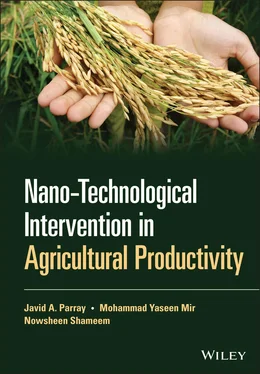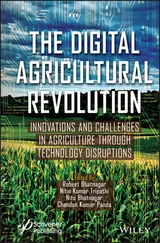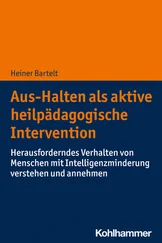For researchers from various disciplines, including heterogeneous and homogeneous catalysis, biomedicine, magnetic fluids, data storage for magnetic resonance imaging (MRI), and environmental remediation such as water decontamination, magnetic NPs are of considerable interest. The literature indicates that NPs work better when the size is smaller than the critical value, i.e. 10–20 nm [68]. Effectively controlled at such a low scale, the magnetic properties of NPs make these particles priceless and can be used in different applications [31, 68, 69]. In NPs, the uneven electronic distribution causes the magnetic property development [70, 71].
1.5.3 Mechanical Properties
Researchers can find new applications in a wide range of necessary sectors, including tribology, surface engineering, and nano‐making, thanks to its distinct mechanical properties. A mechanical study of the automated nature of the NPs involves elastic modulus, hardness, stress, vibration, adhesion, and friction. Coagulation and lubrication also help improve the mechanical characteristics of the NPs and this parameter [72]. NPs exhibit different mechanical properties in contrast with microparticles and their bulk materials. Furthermore, comparing the steepness between NPs and the external contact surface checking on a lubricated or grated contact reveals that the NPs operate in a communication setup. Decent checks and interactions between the NPs' mechanical characteristics and any surface shape are critical for improving surface quality and enhancing material elimination. In these areas, a strong understanding of the fundamental mechanical aspects of NPs, including the elastic module and the hardness, motion, friction, and input, typically requires good performance [72].
The thermal conductivity of NP metals is known to be higher than that of stable fluids. For example, the thermal copper conductivity is about 700 times higher than water and approximately 3000 times higher than engine oil at room temperature. In addition, alumina oxides (Al 2O 3) are thermally more thermally capable than water. Fluids containing solids suspended with higher thermal conductance should therefore be substantially higher than conventional heat transmission fluid. Dispersing the nanometric scales solid particles into liquid such as water, ethylene glycol or oils produces nanofluids. Dispersed nanometric scale nanofluids are supposed to exhibit superior propensities compared to conventional heat transfer fluids and fluids containing microscopic particles. As this thermal transfer occurs on the particles' surface, it is essential to use particles with a large overall surface region. The wider total area also improves the stability of the suspension [73]. It has recently been shown that advanced thermal conductivity is exhibited by nanofluids consisting of CuO or Al 2O 3NPs in water or ethylene [74].
The NPs find their application in almost every day‐to‐day utility, and some of the significant applications are discussed as follows:
1.6.1 Drugs and Medications
The basic physical and chemical properties of single or multiple nano‐sized inorganic particles are becoming an increasingly valuable commodity in developing novel nanoequipment used in many different physical, biological, biomedical, and therapeutic products [75].
Throughout every medicine market, the importance of NPs in delivering drugs in the best dosage range has improved. This has sometimes resulted in an improvement in the medicines' clinical efficiency, weakened side effects, and improved patient compliance [76]. Iron oxide particles such as magnetite (Fe 3O 4) or its oxidized form of maghemite (Fe 2O 3) are most widely used for biomedical applications [77]. For biological and cell imaging applications and photothermal therapeutic applications, the option of NPs to achieve efficient contrast is based on the optical properties of NPs [78]. Over the past few years, hydrophilic NP development as a drug carrier has represented a significant challenge. Polyethylene oxide (PEO) and polylactic acid (PLA) NPs were established as an excellent method for intravenous drug administration among the different approaches [79]. For various in vivo applications, such as MRI contrast enhancement, tissue repair and immunoassay, detoxification of biological fluids, hyperthermia, drug delivery, and cell separation, superparamagnetic iron oxide NPs with good surface chemistry can be used [80]. Antibodies labelled with fluorescent dyes, enzymes, radioactive compounds, or colloidal Au [67] can be used to detect analytes in tissue parts via antigen–antibody interactions.
The specific benefits of liposomes, including the capability to shield drugs from degradation, target them at their active sites, and minimize harmfulness and other side effects, are a possible carrier instead of traditional dosage types. The polymeric NPs provide some significant advantages over the liposomes of these materials. NPs, for example, help improve drug ratability and provide convenient, controlled drug release properties. The extreme absorbed light is effectively converted into localized heat by Au‐NPs, which can be used for targeted laser photothermal cancer therapy [81, 82]. Besides this, to prevent tumour development, the antineoplastic effect of NPs is also effectively used. Compared to organic compounds that are comparatively toxic to biological systems, the antimicrobial properties of inorganic NPs add more potency to this essential feature [83–85]. To selectively overcome the microbial cells, the NPs are engaged with various classes. Because of their adequate antibacterial efficacy, TiO 2, ZnO, BiVO 4, and Cu‐ and Ni‐based NPs have been used for this reason [86].
1.6.2 Materials and Manufacturing
The NP manufacturer displays physicochemical characteristics that induce specific electrical, mechanical, optical, and imaging properties that are highly sought for applications in the medical, commercial, and ecological sectors in particular [87]. NPs focus on biological and non‐biological characterization, design, and engineering of <100 nm structures, exhibiting new and unique characteristics. Many producers at high and low levels have reported the potential benefits of nanotechnology. Mass production of marketable products such as microelectronics, aerospace, and pharmaceutical companies are now underway [88]. Many industries have indicated that nanotechnology is the next development, including food processing and packaging. RET (organic dye molecules and noble metals) has been considered in the recent interest in biophotonics and materials science [89]. The plasmon resonance arising from the reciprocal oscillation of electrons at the surface of the NP [89, 90] is distinctly coloured in NP metals, such as noble metals, such as Au and Ag.
The release of these materials to the atmosphere contributes to commercial and domestic engineered nuclear power plants [91]. The use of engineering materials would increase soil and groundwater NP concentrations, which provide the most significant exposure pathways for assessing environmental risk [92]. During the formation of natural NPs, the surface of NPs can be consumed, co‐precipitated, or stuck with the accumulation of NPs containing toxins adsorbed to their bodies by a vast specific‐to‐mass proportion of natural NPs. NP pollutants' interaction depends on the characteristics of NPs, such as scale, composition, morphology, porosity and aggregation, and structure [93]. The following attributes of NPs make the ideal theme candidate for environmentally friendly goods, sanitation of toxic substance‐contaminated materials, and ecological stage sensors [10]. Superparamagnetic iron oxide NPs are a valuable sorbent material for this harmful soft material [94, 95].
Читать дальше











![Chade-Meng Tan - Search Inside Yourself - Increase Productivity, Creativity and Happiness [ePub edition]](/books/703803/chade-thumb.webp)
